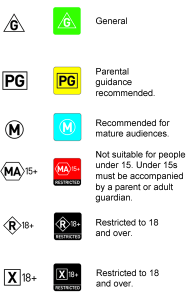Submission to the Productivity Commission
 Australia’s Productivity Commission is currently doing an investigation into spending on mental health including how effective the money spent on mental health is across Australia so that government policies are sustainable and effective in helping people. Spending is now over $9 billion a year or $1 million an hour.1
Australia’s Productivity Commission is currently doing an investigation into spending on mental health including how effective the money spent on mental health is across Australia so that government policies are sustainable and effective in helping people. Spending is now over $9 billion a year or $1 million an hour.1
This is a long awaited inquiry especially for those how have been harmed by psychiatry and its treatments and to look at the programs which produce no results or help to vulnerable children and adults. For years experts have said there is no accountability for the money spent on mental health.
Factually if the money spent on mental health were working, there would be a decline in the numbers of people with problems.
Click here to download CCHR’s submission
What the Productivity Commission will look at includes
1) If the current money spent is delivering value for money and the best outcomes for
individuals, their families, society and the economy.
2) Examining the effectiveness of current programs across all states and territories to improve mental health and suicide prevention.
3) How to develop a framework that measures and reports on the results from mental health policies over the long term.
Quick Facts about Australia’s Psychiatric Industry
- Over 4 million Australian’s are on a psychiatric drug including 110,697 children under the age of 15.2
- Nearly 5,000 Australian children aged two to six are on the ADHD drug methylphenidate (Ritalin, Concerta) while the TGA has not approved its use for those younger than six.3
- More than 49,000 children aged 2-16 are on antidepressants, although the TGA does not authorize antidepressant use in depression in those under 18.4
- As of 15th December 2017 there were 41,317 adverse drug reactions reported to Australia’s drug regulatory agency (TGA) linked to psychiatric drugs, 1,439 of these deaths.5
- Spending has increased from $6.9 billion in 2010-11 to 9.1 billion in 2016/17, a nearly 32 % increase in just 6 years. 6 Despite this there is an incessant cry for more funding.
- The number of Medicare funded electroshock has increased 86% in the last 10 years (up from 19,026 in 2007/08 to 35,498 in 2017/18).7
- There are now 67 psychiatric drug warnings issued by Australia’s drug regulatory agency. These include to warn of the risk of hallucinations, increased blood pressure, agitation, akathisia (inability to remain motionless), aggression, life threatening heart problems, addiction, suicidal ideation and possible death.8
- Mental health complaints in Victoria alone, increased a staggering 96% from 999 complaints in 2014/15 to 1,963 in 2017/18.9
With psychiatry having no real workable humane solutions, other than a continual cry for more funding and the lack there of being blamed as the cause of the problem, proven solutions that help and don’t harm must be funded. The existing money must be spent on solutions to help people that do work.
No other industry would be allowed such a poor performance for money invested. In contrast, money given to other areas of medicine shows noticeable progress, such as improving survival rates from cardiovascular disease over the past 20 years.10
It is not sound economic practice to continue to continue to increase funding where a lack of improvement and ineffective solutions are forthcoming.
TAKE ACTION
Anyone can make a brief comment at any time on this link. Comments are not considered formal submissions but may be used by the Commission to inform in its report. https://www.pc.gov.au/inquiries/current/mental-health/comment
Terms of Reference for the Inquiry: https://www.pc.gov.au/inquiries/current/mental-health/terms-of-reference
More information on the Inquiry can be found on the Productivity Commissions’ website at: https://www.pc.gov.au/inquiries/current/mental-health#issues
To sign up for Productivity Commission updates on the progress of the inquiry: https://www.pc.gov.au/inquiries/current/mental-health/subscribe
The first round of submissions closed on 5 April 2019
This inquiry is expected to last until May 2020 when the final report is given to the Federal Government.
References
2 “Table PBS.3 & Table PBS.3, of the 2016-17 Mental Health Services in Australia, Mental Health related prescriptions, Australian Government, Australian Institute of Health and Welfare. Download the Excel spreadsheet under the first blue bar graphs on webpage. https://www.aihw.gov.au/reports/mental-health-services/mental-health-services-in-australia/report-contents/mental-health-related-prescriptions/prescriptions
3 http://cchr.org.au/wp-content/uploads/2016/08/Numbers-on-ADHD-Drugs-30-May-2016.pdf; See “Product Information” on Ritalin and Concerta on TGA website: https://www.ebs.tga.gov.au/ebs/picmi/picmirepository.nsf/pdf?OpenAgent&id=CP-2010-PI-03175-3&d=201903291016933 ; https://www.ebs.tga.gov.au/ebs/picmi/picmirepository.nsf/pdf?OpenAgent&id=CP-2009-PI-00919-3
4 “PBS/RPBS Reports for requested items, MI NO: MI5329, Report 1A for antidepressants,” includes PBS/RPBS, co-payment and under co-payment, 1 Jan 2015 to 31 Dec 2015, Department of Human Services Strategic Information Division, Information Services Division. http://cchr.org.au/wp-content/uploads/2016/08/Numbers-on-Antidepressants-30-May-2016.pdf ; “Suicidality with SSRIs: adults and children,” Australian Adverse Drug Reactions Bulletin, TGA, Vol. 24, Number 4, August 2005. https://www.tga.gov.au/publication-issue/australian-adverse-drug-reactions-bulletin-vol-24-no-3
5 Therapeutic Goods Administration Database of Adverse Event Notifications-Medicines, List of reports generated for each antidepressant, antipsychotic & ADHD drug as of 15/12/2017 and added manually. https://www.tga.gov.au/database-adverse-event-notifications-daen
6 https://www.aihw.gov.au/getmedia/18a4ccff-416b-4b37-adfc-abe52a0c7083/Mental-health-expenditure-2010-11.pdf.aspx ; https://www.aihw.gov.au/reports/mental-health-services/mental-health-services-in-australia/report-contents/mental-health-related-prescriptions/prescriptions
7 Use the electroconvulsive therapy Medicare Item code (14224) to obtain Medicare Statistics using this link: http://medicarestatistics.humanservices.gov.au/statistics/mbs_item.jsp
Medicare Item Code for electroconvulsive therapy (14224) can be found here: http://www.mbsonline.gov.au/internet/mbsonline/publishing.nsf/Content/Home
9 “Mental Health Complaints Commissioner, Annual Report 2018,” p. 16; Mental Health Complaints Commissioner, Annual Report 2014-15,” p.31 ; https://www.mhcc.vic.gov.au/resources/publications
10 Cardiovascular disease: most deaths and highest costs, but situation improving, Australian Institute of Health and Welfare, https://www.aihw.gov.au/news-media/media-releases/2011/2011-mar/cardiovascular-disease-most-deaths-and-highest-co
Source: CCHR Anzo

